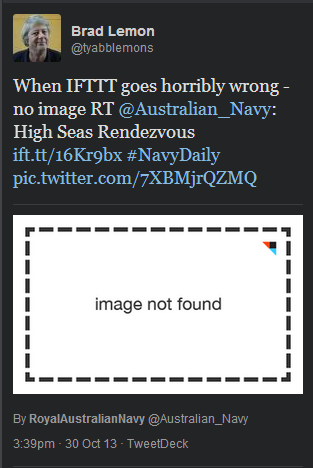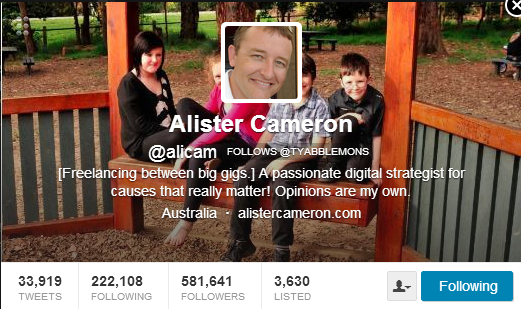Brand Stealing on Twitter
Published by Brad Lemon on October 30th, 2013
Brand Stealing on Twitter
by Brad Lemon
30th October, 2013.
There is a way to increase your retweet rate dramatically, and boost your Klout score (if you place faith in such things) by taking a popular tweet and giving it an RT, instead of a native retweet. By using a popular tweet (preferably from a highly followed, credible account), you ensure you will get retweets under your own name. It's a very subtle way of brand-stealing.
First, we must look at what a Twitter brand consists of. The most important part of your brand is your avatar, and this is why you should never change it. Most users can't keep up with all the tweets in their timeline. Some have lists of important people, and they try to read every tweet in that list. But mostly, people just skim their timeline and read tweets from people that catch their eye, or tweets that stand out somehow. Your avatar is much quicker to identify than your username. Next most important part of your brand is obviously your username (and listed name), followed by your follower count, and then bio. After this, I think comes the amount of people you are following - many people don't like to follow celebrities because it changes the balance of their follower ratio. Next, comes your tweets. I think your cover-photo rates in there somewhere, but I don't know what rank it has. All these things make up your Twitter brand. The number of tweets you have is unimportant, unless it's only 6, which should ring alarm bells. I would be prepared to debate their order of importance - you may see it slightly differently to me.
It's important to note that an original tweet carries metadata about when it was tweeted and what client was used, and the conversation that it is part of. All these bits of information are important. In the case of fire traffic, the metadata is especially important if your tweet doesn't carry a timestamp. By using a native retweet, you preserve this data, and anybody who filters retweets can block your retweet out. If you RT the tweet, you replace the original branding with your own, and destroy the original metadata, and overwrite it with your own. You'll get past most filters because your tweet appears to be new, even though you are RTing another tweet.
If you've chosen to RT a popular tweet, many people will give you a native retweet, boosting your Klout score. Because an RT references the original author, they won't mind, unless they are a developed user aware of brand-stealing tricks. Government agencies like NSWRFS don't care about brand stealing - they just want to get their data out. That's the other thing, users will general be grateful for an RT - they will thank you for stealing their brand!
Now, I used to do a lot of brand-stealing about a year ago. I was very good at it, and I got lots of retweets. It wasn't until a user pulled me up that I realised that it was unethical. But the worst part of brand-stealing is that it destroys the metadata.
There might be a very good reason for using the RT. I'm not suggesting it's taboo - there are times when it should be used, and indeed, you can't make a modified tweet (MT) without brand-stealing.
Here is a reason to use RT. In this case, I added extra info to the text of the tweet, and RT'd the original tweet, crediting the author. The original metadata for the tweet was destroyed, and new metadata was added. The Navy didn't tweet it at 3:39pm using Tweetdeck, I did.
Original of that tweet, showing original metadata, which told me that the tweet was sent by IFTTT:
Native retweet - metadata still intact:
This next one is an example of brand-stealing. This is actually a funny clip, so I've posted the video. You'll notice here I've credited the author (@alicam) by RTing the tweet, but I've replaced his avatar with my own. I captured the tweet immediately after I RT'd it, so there are no retweets yet. There will be one or two later on as people surf my feed. Many users go though my native tweets and give stuff they like a native retweet. In this example, I chose a big account (581k followers!). You have no idea when this tweet first appeared, or what software produced it, or what conversation it was from - I have destroyed the metadata. You could find it by searching for it, though, provided @alicam hasn't deleted the original.
One further thing. If Alister now deleted the original tweet, all native retweets would also be deleted, yet my RT would live on. If the information was incorrect, Alister has lost the ability to correct it by deleting it.
In conclusion, brand-stealing will increase your followers and retweets, and boost your Klout score. To me, it's unethical. But most important of all, the metadata is lost. I don't recommend the practice. I'd like to apologise to Alister for stealing his very good tweet, to use in my example. Don't think Alister has ever engaged in brand-stealing - his content is genuine.
Brad Lemon - @tyabblemons





